One evening last year, while one of the technicians from (insert name of telco here) was helping to check my Internet connection quality (at home), he chatted with me. Coincidentally it was the 10th day of Chinese New Year (Mind you, CNY lasts for 15 days, with the last day aptly named Chap Goh Mei). So, he started by asking whether I had ‘balik kampung,’ to which I replied, “Raya kat sini ja lah, tak yah nak ulang-alik.” [It’s easier for me to stay put]. Perhaps he was expecting a different answer from me because I saw that he looked confused. Since he was curious to know about my family, I told him that my mum’s a Hokkien from Malacca, but is also influenced by the Peranakan Chinese way of life (thanks to my late maternal grandmother’s relatives). Of course, I also mentioned my Hainanese father, who’s conversant in Cantonese and Hakka. So, I explained that conversations at home would mainly be in English, though we would conveniently switch to/mix with Bahasa Malaysia at times. Surprised by my response, he asked, “Peranakan/Baba Nyonya? Macam mana tu?” He remarked, “Diorang pakai cheongsam lah?”
Now that I think back, at my late maternal grandmother’s house, where I would be stationed at while my parents were at work, I would have exposure to a mix of Hokkien, Malay patois, as well as Malay. So, the Peranakan way of life was somewhat familiar to me. Even then, as I was younger, I was not entirely sure. I was approaching my 20s when I realised there was indeed something unique about the Peranakan Chinese. I have always wanted to find out how many Peranakans still carry out their traditions. So, I thought that it would be a good idea to shine the spotlight on one of them as we welcome the Year of the Rat (2020).
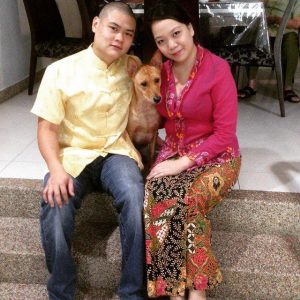
So, when my ex-coursemate Edeline Goh (pictured in a kebaya nyonya with her husband and pet dog) agreed to be interviewed, I was ecstatic I almost wanted to ‘joget’.
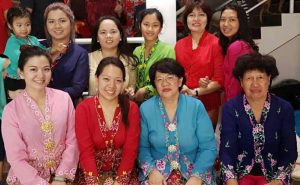
Some of the traditions that the Goh family practises include hanging the Chai Kee, reunion dinner and So Ja the next day. “During the eve of CNY, we will hang the red cloth (known as the Chai Kee) on our front door, as a symbol of celebration and to welcome blessings into our home. On top of that, there’s the reunion dinner on the eve of CNY where our family and extended family (Goh, seen in red, with her extended family) would gather for a feast and to greet the New Year.”
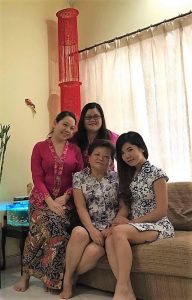
“On the (first day) of CNY, we would wake up early in the morning, dressed in our CNY clothes (Goh sitting in front with her in-laws in cheongsam (front) and a different type of kebaya (lady behind)). When I was younger, my [maternal] grandmother, whom I call Mama, would always dress in her sarong kebaya but we did not really understand the importance of embracing our traditions until we grew older. So, for the past few years, we have been wearing our kebayas too during CNY.”
“My family has been blessed with the chance to have our kebayas tailor-made, the bunga hand-sewn and tebuk lubang by a talented seamstress, just like how my Mama’s kebayas were made. So, we would wear our best Kebaya that’s fastened with the gold kerongsang and sarong with a tali pinggang. My Mama’s tali pinggang is made out of silver.” Goh added that her grandmother would also put on her jade earrings, bangle and kasut manik. “They’re usually worn for at least half a day when we would welcome visitors or go visiting.”
So ja is a form of greeting and respect to the elders, whereby the eldest person (Goh’s [maternal] grandmother) would sit on the chair, the Goh family has the Mother of Pearl at home. “By family hierarchy (eldest to the youngest), we would kneel in front of my Mama and wish her Selamat Tahun Baru together with other blessings. It’s usually along the lines of panjang-panjang umur, sihat-sihat dan untung-untung selalu. So, for my parents, it’ll be “Nya (that’s what my mother and father calls my [maternal] grandmother), panjang-panjang umur, sihat-sihat dan untung-untung selalu.”
“My Mama would then bless us and pass on some words of wisdom and then give us the ang pow. For example, she would say to me something like “Gembira-gembira selalu, jangan marah suami, selalu mesti kam cheong (understand each other), sihat-sihat dan selalu jaga mummy and daddy.” Once my Mama’s turn is done, it would be my parents and the process would then follow suit and then those who are married would sit on the chair.”
Some of the yummy dishes in the Goh family home include Itek Tim (duck soup with pickled veges and all.), fried noodles. Depending on what’s available and how much preparation time it takes, there’s also buah keluak curry, sek bak (braised pork with spices), hee pio soup (fish maw soup) and cha sengkuang (stir-fried turnips + carrots). She highlighted, “Sometimes, if celebrations on Day One are a bit kelam-kabut, we’d also have Pongteh, which is considered more of an everyday-dish rather than a celebration dish (chicken/pork stew + potatoes in fermented bean paste and Gula Melaka, also known as palm sugar), as well as Chap Chye (a mixed vege dish with glass noodles, cabbage and other veges).”
The Goh family is sure fortunate to have all their kuihs and desserts home-made by two people – Goh’s mother and Mama - armed with good cooking skills. Never mind the long and tedious process involved in preparing those desserts and kuihs, the two would also make sure that they turn out perfectly. She revealed, “My mum especially has continued the tradition of making Nyonya kuihs.” Notably, while the family doesn’t have a standard dessert menu for Chinese New Year, Goh shared that some varieties include apom bokwa (tiny pancake-like dessert, enjoyed with a banana sauce that’s cooked with Gula Melaka), kuih lapis, Kuih Kosui and Pulut Tekan.
“As for greeting one another, it’s usually Selamat Tahun Baru or Happy Chinese New Year.”
On the pantangs/superstitions, “We used to observe pantangs like no washing hair on the first and second day because you’ll wash away your good luck. It would be really funny because my sisters and I (I’m the second of four siblings) would usually head to the dining table with damp hair because of that. Besides that, no sweeping the house on the first two days of CNY since you can’t throw away whatever’s gathered in the dustpan. However, with the change of times, faith and perception of things, we don’t quite practice these today.”
On how much technology has changed the way the Goh family celebrates the festival, she said: “I would say the only way technology has changed the way we celebrate is that my Mama has to patiently wait before we loh sang because we grandchildren are taking pictures for our social media? . Otherwise we’d still sit [around] the tok (table) and [chit-chat] just like old times.”
Notes/Definitions/Descriptions
• Chap Goh Mei – Chap = 10, Goh = 5. Chap Goh =15. Mei = abbreviation of night because ahm mei = night. So, Chap Goh Mei = 15th night.
• Peranakan - born locally
• Cheongsam – Feminine, fitting dress with Chinese features originating from Manchuria.
• Joget - A Portuguese-influenced dance.
• The interviewee’s maternal grandmother is a Nyonya from Malacca, (while her paternal grandmother is Eurasian). The Peranakan Chinese can also be found in other Malaysian states including Penang and Terengganu, in which the Peranakan Chinese live and celebrate Chinese New Year with slight variations in their cooking and how they speak.
• ‘Tebuk lubang’ – Tebuk = ‘punch’ ‘lubang’ = hole. In this context, it is used to refer to the delicate needlework technique involved in getting the kebaya done.
• Bunga – ‘Bunga’ means flower. In this context, it is used to refer to the outlines of the floral motif sewn on the fabric and cutting away the inside.
• Kerongsang – brooch
• Tali pinggang – belt. In this case, it is a special belt to match well with the kebaya Nyonya.
• Kasut manik – beaded shoes
• Ang pow – from Hokkien for red packet containing $$, usually given by the married to the unmarried. Can also be from employer to employee. Similar to what you’d receive or give out during both Hari Raya Aidilfitri and Deepavali.
• Kuih lapis – layer cake
• Pulut Tekan – Tekan means press. Pulut is the closest one would say/describe when something is made out of glutinous rice. So, Pulut Tekan can be translated to ‘pressed glutinous rice’, made out of coconut milk.
• Kuih kosui – With a dimple in the middle, it is sweet, soft yet wobbly. Slightly bouncy in texture, it is topped with grated coconut, which is slightly salty.
• Loh sang – It is the act of tossing fish salad (Yee Sang), said to have been brought by a fisherman of ethnic Chinese origin, who chose Seremban (in Negeri Sembilan) as his base in the 1920s. The ‘loh sang’ ritual only became popular much later. To date, it is practised only by Malaysians and Singaporeans.
*Some non-English words/expressions are best left as they are - to retain the sound when used amongst Hokkien, native/near-native Malay speakers, and most importantly, the Malay patois speakers.
*There are different types of kebayas and they are also usually worn by ethnic Malay girls/women. Due to the diversity in Malaysia, people of other ethnic groups may also choose to wear these kebayas, provided they know how and are comfortable. The kebaya is typically reserved for special occasions or events due to the practicality of the attire, considering the high humidity levels in the country throughout the year.
*Please note that the author herself is conversant in Hokkien, and have both written and spoken proficiencies in the Malay, English, and French languages.
*Lunar New Year – The Lunar New Year is observed by the Overseas Chinese communities including those in the Philippines, Singapore, Cambodia and Taiwan, the Chinese in China, Vietnamese, South Koreans, Thais (a few provinces) and Japanese.

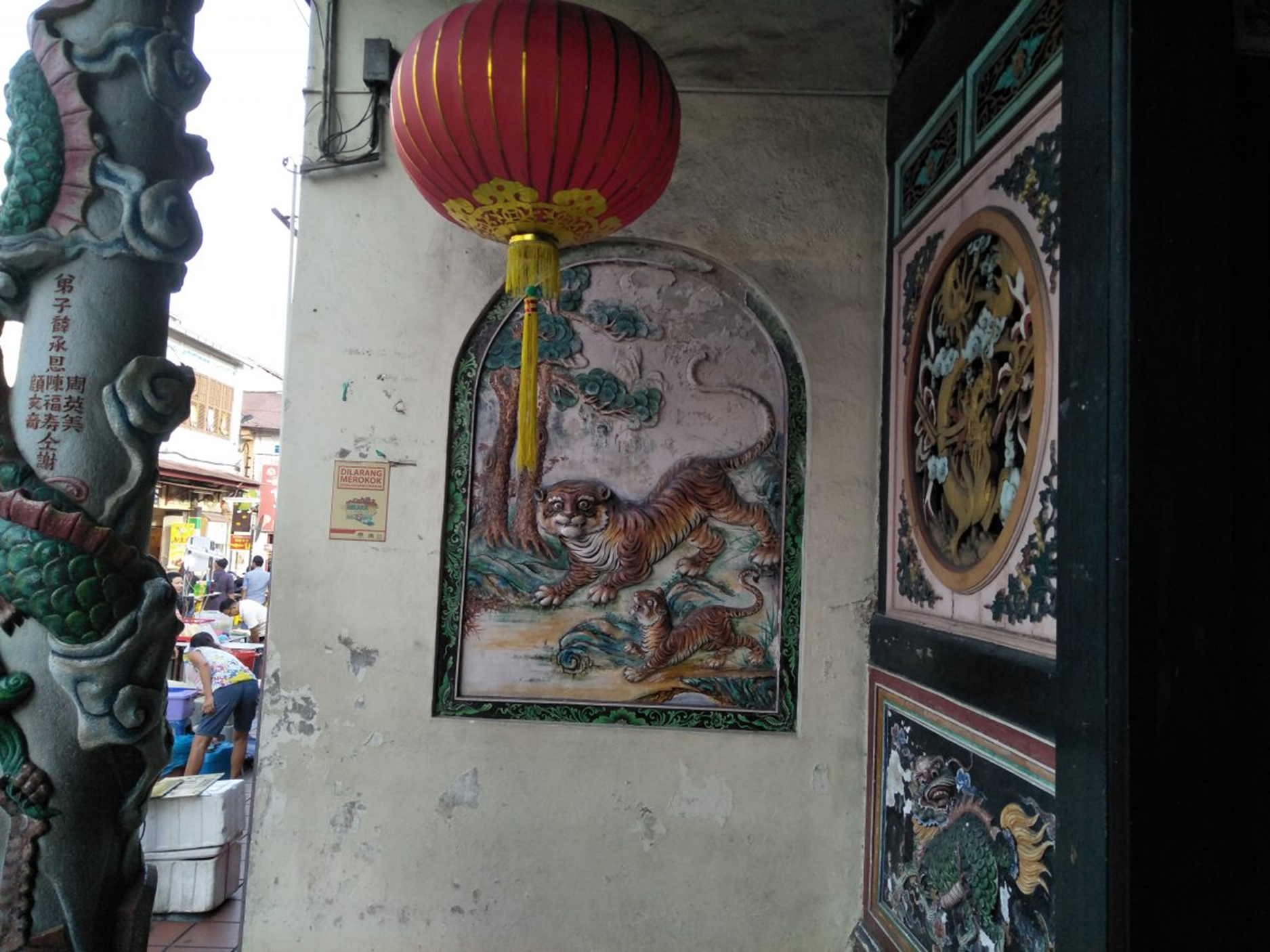




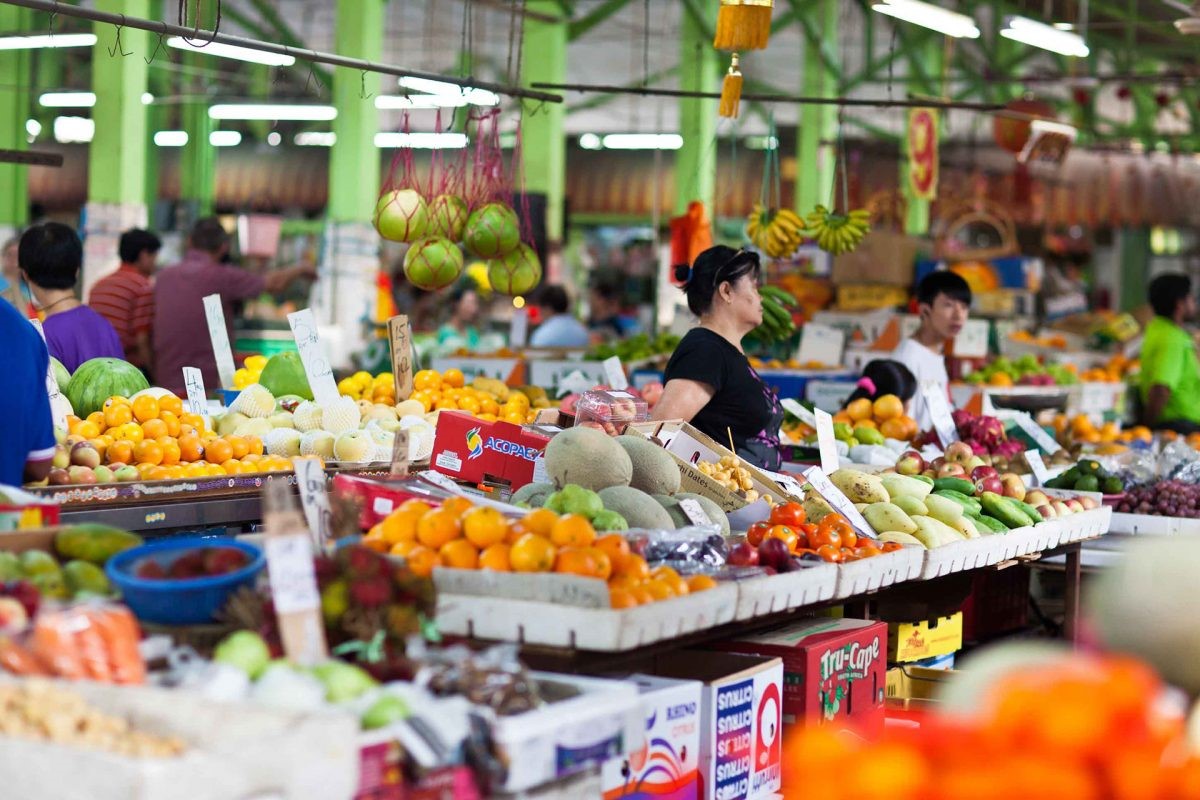

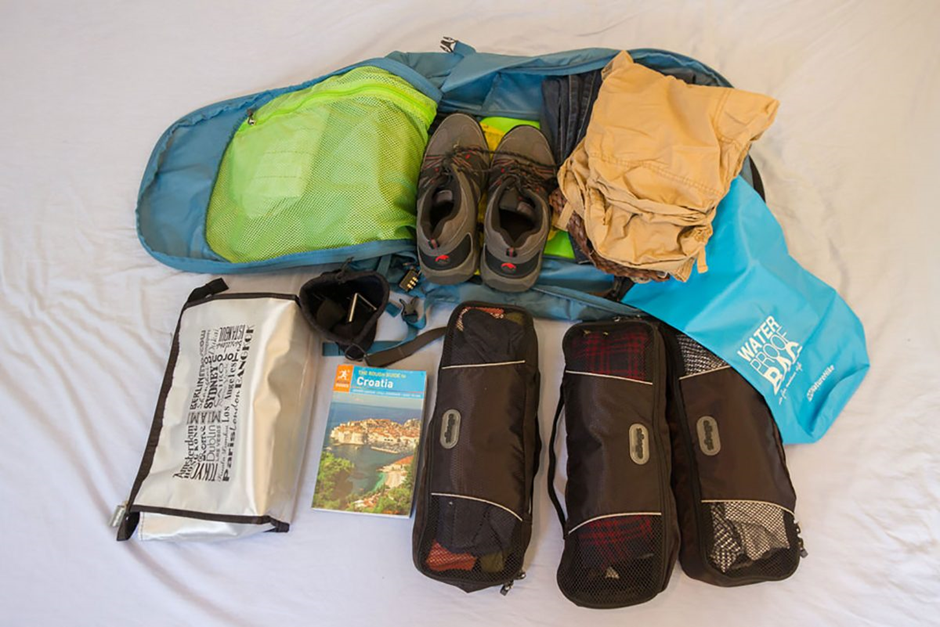
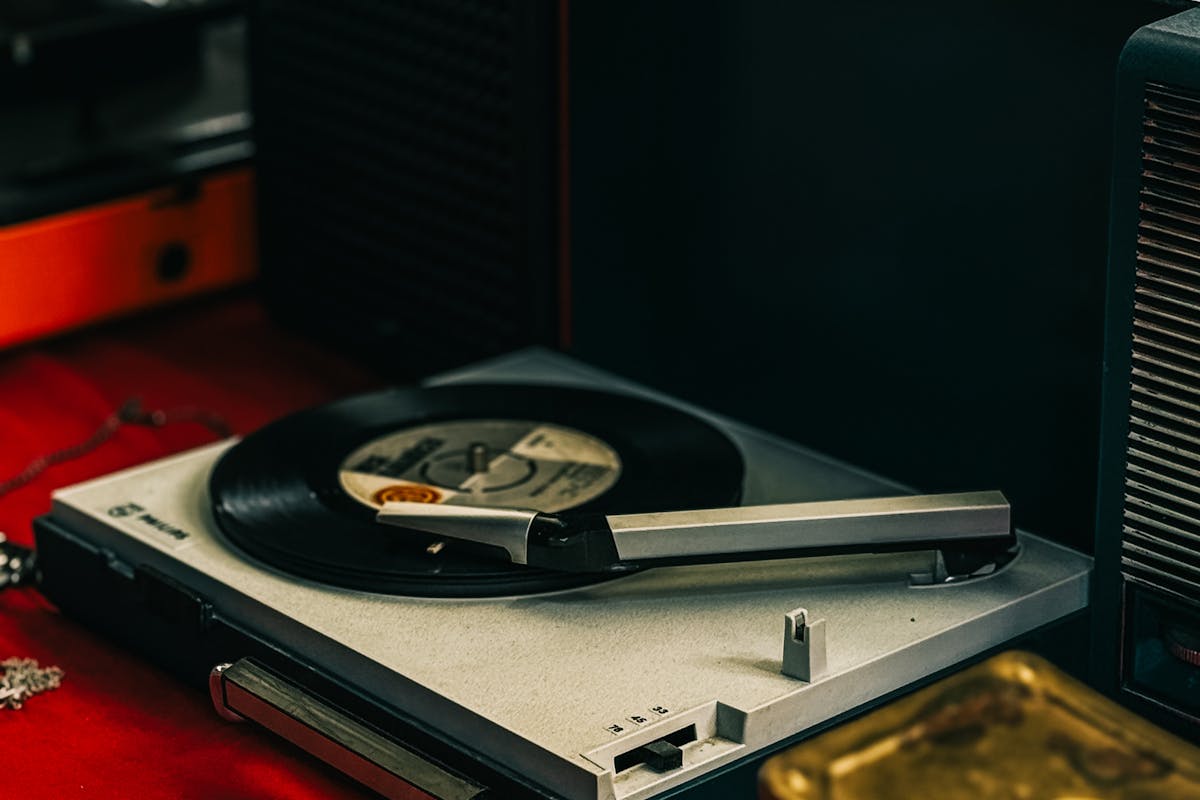
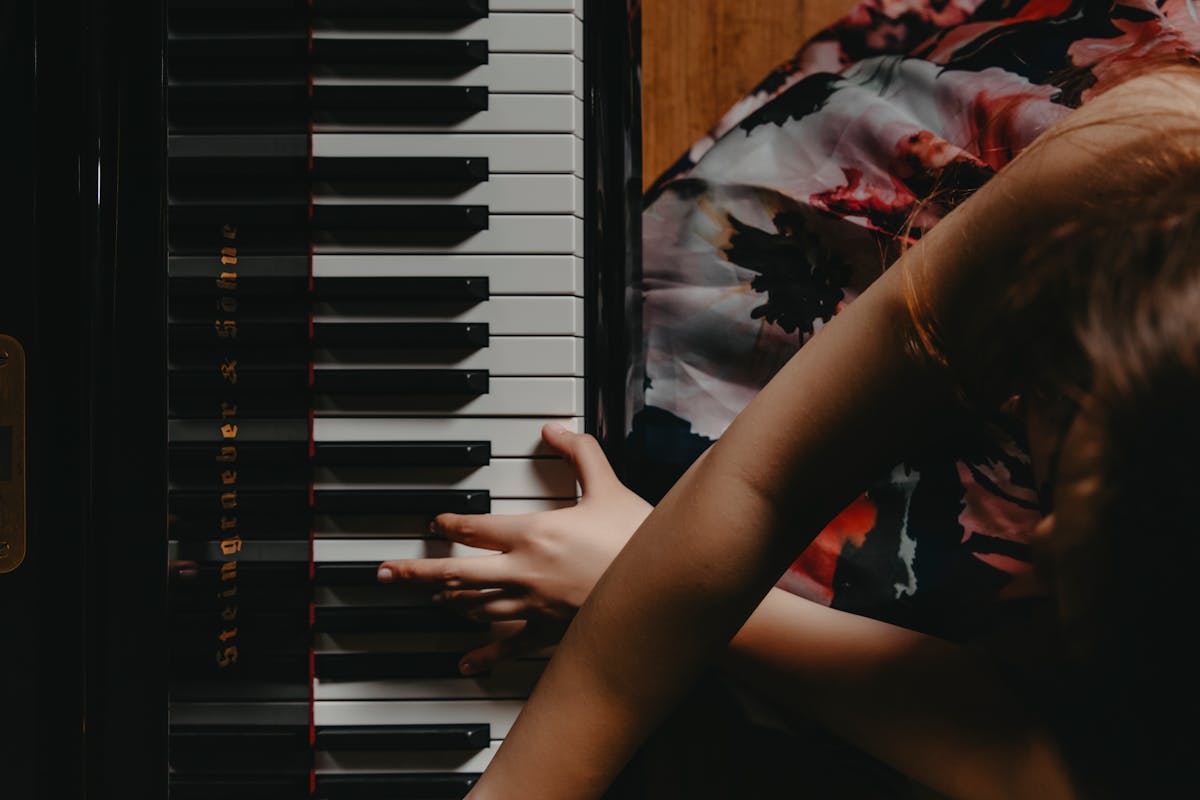

Showing 0 comments